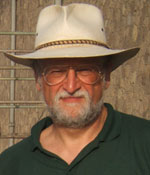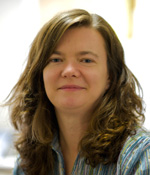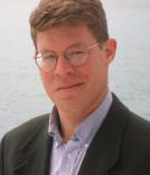Faculty Research

Renato Perucchio, Ph.D.
Professor of Mechanical Engineering and of Biomedical Engineering, and Director of the Program in Archaeology, Technology, and Historical Structures.
Prof. Perucchio’s current research and teaching interests are in computational solid and structural mechanics and in the development of engineering design practices in Classical Antiquity. He is directing projects on the structural design of monumental concrete domes and vaults of Roman Imperial architecture, in the computational and experimental modeling of the seismic behavior of Moche Huacas of pre-Hispanic Peru, and on the development of solid modeling and augmented reality procedures for the structural conservation of archaeological monuments. All projects are highly multidisciplinary: Perucchio and his students work with leading experts in Roman and Peruvian archeology and architecture, with the curators of major archaeological monuments, and with prominent colleagues in engineering and the humanities. Prof. Perucchio has directed several undergraduates ATHS-related research projects and undergraduates students have been involved in all aspects of his research.
Learn more about my research >

Elizabeth Colantoni
Assistant Professor of Classics.
My teaching is focused on Classical archaeology, ancient history, and Latin, and my research interests are in Etruscan and Roman archaeology, ancient Roman religion, and early Rome.
Sample Projects
- "The Living and the Dead: The Feasibility of Interpreting Details of Life from Funerary Evidence" (Dawn Batts, senior project, 2010)
- Paper on the Sea Peoples and societal collapse at the end of the Bronze Age in the eastern Mediterranean (Angelica Kanganis, senior project, 2011)
- Paper on religion and Romanization in ancient Britain (Leah Barish, independent study, 2011)
- "The Significance of the Architecture and Decoration of the Colosseum for Ancient Roman Society" (Sarah Ackroyd, independent study, 2011)
Learn more about my research >
Summer Course in Italy >

Michael Jarvis, Ph.D.
BA, archaeology and history, Rutgers University; Ph.D., early American history, College of William and Mary.
I have excavated a wide variety of historical archaeology sites since 1988, working with Sturbridge Village, Colonial Williamsburg Foundation, the National Parks Service, Jamestown Rediscovery, the Bermuda National Trust, National Museum of Bermuda, the St. George's Foundation, the Bermuda Government, and the St. Eustatius Center for Archaeological Research. In the 1980s and early 1990s, I focused on Revolutionary-period military and blacksmith sites and early Chesapeake sites and was part of the 1995 Jamestown field school that discovered the footprint of the original 1607 fort. Most of my more recent archaeological and historical research has focused on Bermuda, where I've investigated the shift from timber-frame to stone vernacular architecture and completed intensive property reconstructions and architectural assessments for the entire town of St. Georges (1612 - present), the oldest continuously occupied town in English America.
In 2010, I launched the Smiths Island Archaeology Project, which takes a 60-acre island in St. George's Harbour as a unit for studying four centuries of changing maritime activities and land-use strategies, the lives of enslaved African and Native American Bermudians, and medical practices in an age of Atlantic epidemics. The island also boasts the first farm and homestead in Bermuda, the first place in English America where tobacco was cultivated (1610-1612) and which preceded Bermuda's formal colonization. In 2012, I began the first of a planned five-year series of UR undergraduate field schools to provide multidisciplinary training for students in archaeological excavation, analysis, and historical research techniques.
For results of the 2012 field school, please see: smithsislandarchaeology.blogspot.com
Sample Projects
- "Archaeological Insights into Bermuda's Earliest Architecture, 1609-1663" (Lily Carhart, Honors Thesis, 2011)
- (Successful ATHS graduate, just accepted into the MA archaeology programs at the Universities of York and Reading)
- "Cobblestone Architecture of the Erie Canal Corridor" 19th c. vernacular/local building tradition - 2010 paper
- (proposed) GIS Reconstruction of the Townscape of 18th-century St. George's
